Seven Culinary Treasures for Sale at Lydia Shire’s Weston Estate
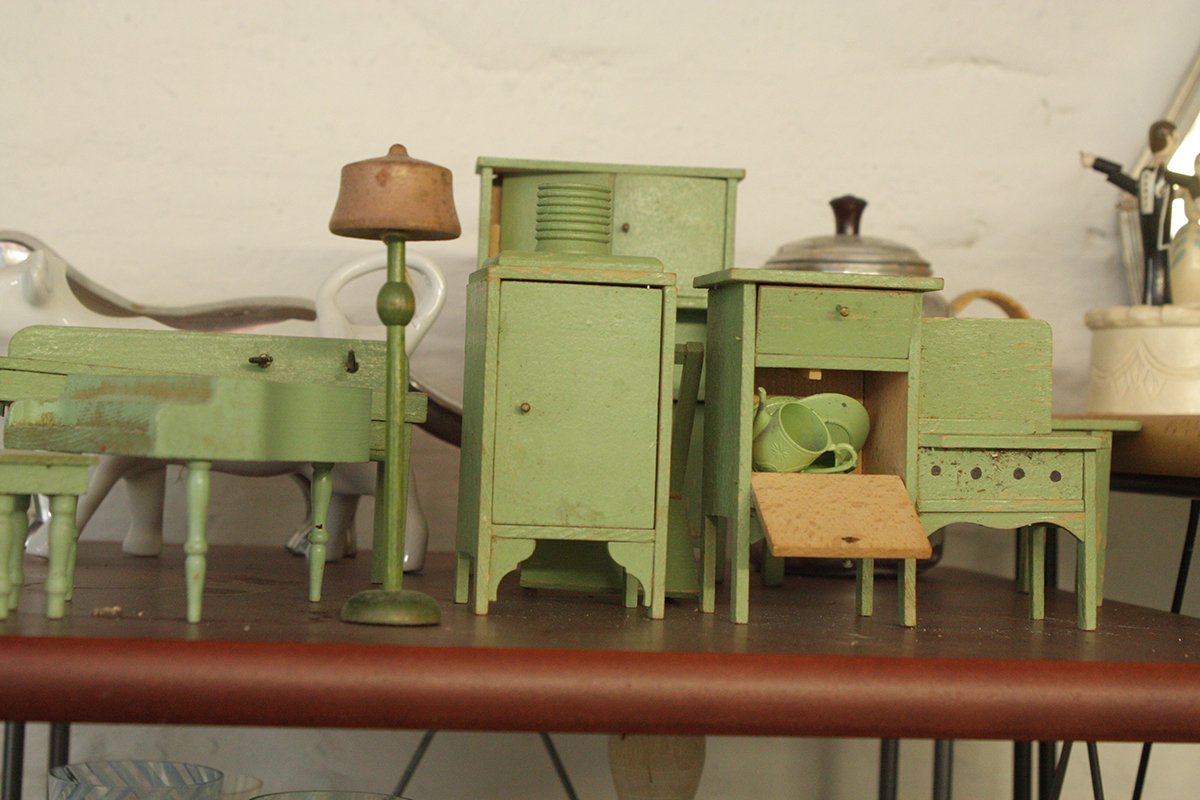
Photo courtesy of Trilogy Estate Sales
When Lydia Shire found an 1840s farmhouse for sale in Weston in the early 1990s, she immediately fell in love with the 4,000-square foot home—despite the “water in the roof and squirrels in the walls,” she says. “It was vacant at that point, it was in total disrepair.”
But despite her husband, Uriel Pineda’s, reservations, she purchased it anyway. When a New York architect refused to take on the project, Shire commissioned her daughter, Lisa, to do it—it was the recent Pratt Institute graduate’s first assignment. The younger Shire created unique curves and open vantage points throughout the house, and Lydia Shire spent the next two decades filling it with art and collectibles to match her bold personality.
Shire created many of her menus from her days at Biba, Locke-Ober, and Scampo in an office at the Weston home, a much brighter and “inspiring” option than in her cramped restaurant offices. But after 22 years, Pineda and Shire no longer need such an expansive abode, and are moving to a two-bedroom home in Back Bay later this month.
“I don’t want to store [my collectibles] in boxes; that’s stupid. I’m doing my best to cull through and let other people enjoy these beautiful items,” Shire says.
Trilogy Estate Sales is hosting a sale at Shire’s historic Weston home this Saturday, July 23, with everything from jewelry, to rugs, to china and stemware, to antique doll beds, and much of Shire’s extensive copper collection up for sale. Plus, the legendary chef herself is making refreshments for guests to enjoy while they shop.
Below, a selection of some of Shire’s more curious culinary artifacts:

Photo courtesy of Trilogy Estate Sales
1. Original brass Biba signage
“It was in the kitchen [floor], right in front of where the expeditor stands. Every single cook that’s ever worked at Biba [has stood on it]—Susan Regis, myself, [Scampo chef] Simon [Restrepo], [son and Scampo executive sous chef] Alex [Shire]. When I do something, I have to have a little art involved in it. When you spend, you know, 10 hours of the day in a kitchen, I can’t have it be white. To me, it would look like an insane asylum. The kitchen at Scampo is gray tiles, and I have these pieces of red marble set in the walls. You just don’t feel as though you’re in a bleached-out, white, hospital-like environment. It’s just more soothing, and I think adds to the creativity.”
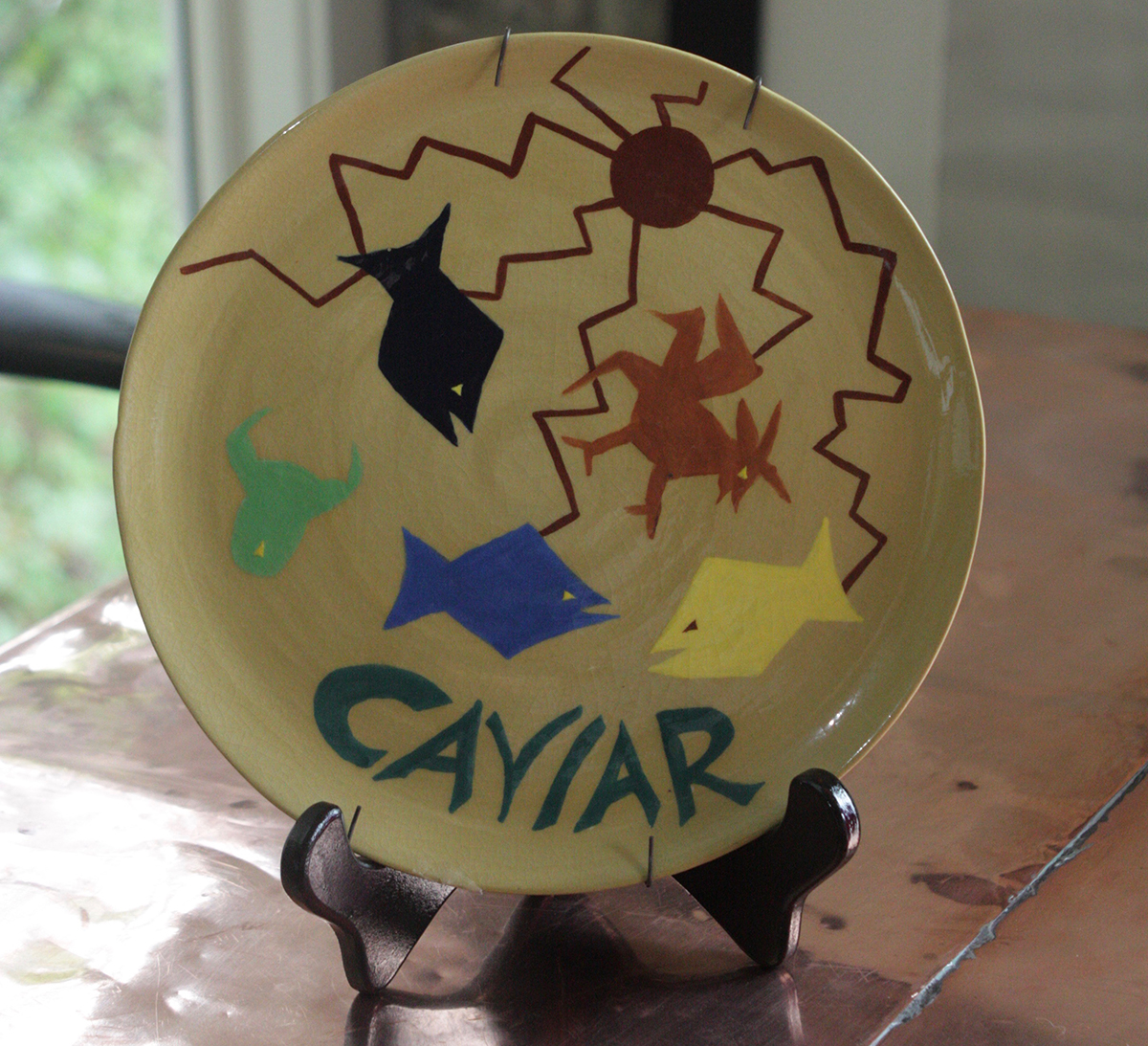
Photo courtesy of Trilogy Estate Sales
2. Caviar plate from Biba
“It’s signed by [potter] Heidi Loewen. It has the little animals that were part of our logo, and it says ‘caviar’ at the bottom. We started with 12. I had one remaining, so I took it home.”
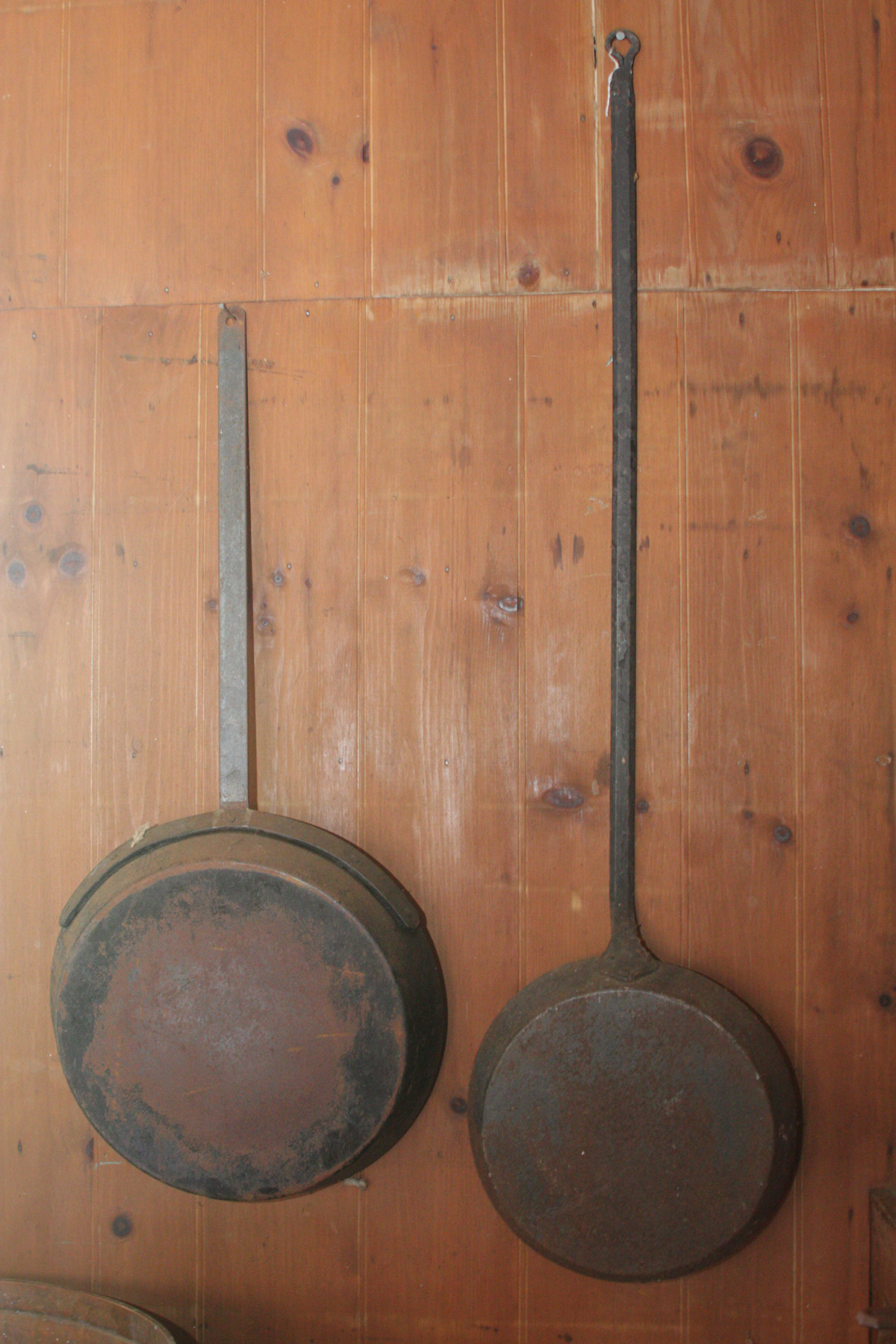
Photo courtesy of Trilogy Estate Sales
3. Long-handled cast iron pan from Locke-Ober
“It was from the 1800s. It’s a standard frying pan bottom, but it has a very long handle. It’s a very beautiful pan. We didn’t cook anything [in it]. It was not what you would use nowadays; it’s not very easy to clean, the handle was too long. It looked very beautiful and original to Locke-Ober. Locke-Ober wasn’t the type of place to have rustic-looking things like that hanging; it just didn’t go with the decor at the time, but for events I would do, it was very cool. I used to take it with me to events, like the Spinazzola event, and hang it up next to my station. I think it would so great on someone’s brick wall, in their kitchen, or next to a fireplace.”
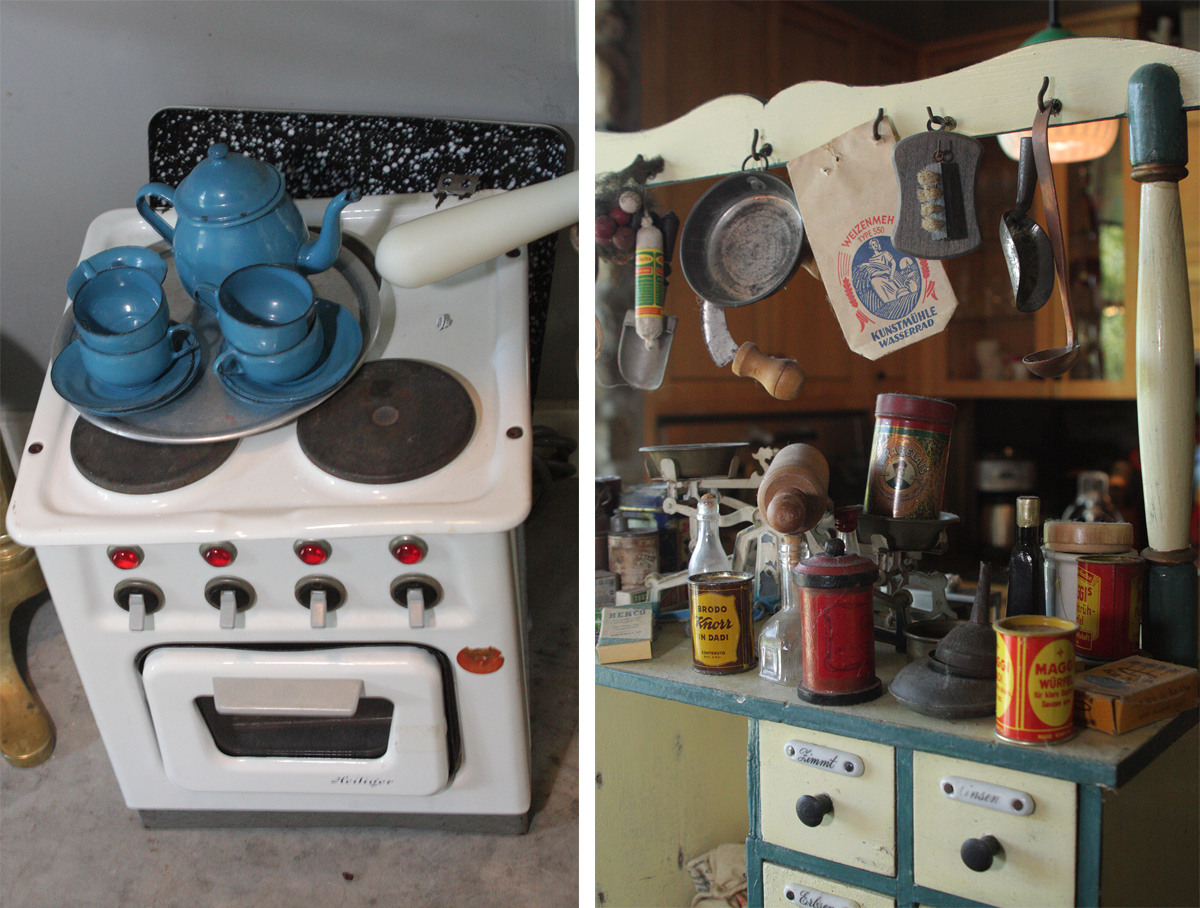
Photo courtesy of Trilogy Estate Sales
4. Miniature kitchen tools and stoves
“I’ve always collected child’s toys. I have four children; maybe that’s why. I go to Brimfield. I definitely am a shopper. In my kitchen in Weston, I have a pretty big pantry, and this is where all of my culinary antiques are. Now, in my new place, I have a very beautiful kitchen, but it’s not very big. What am I going to do with all my culinary antiques? I’m ready for someone else to enjoy them.”
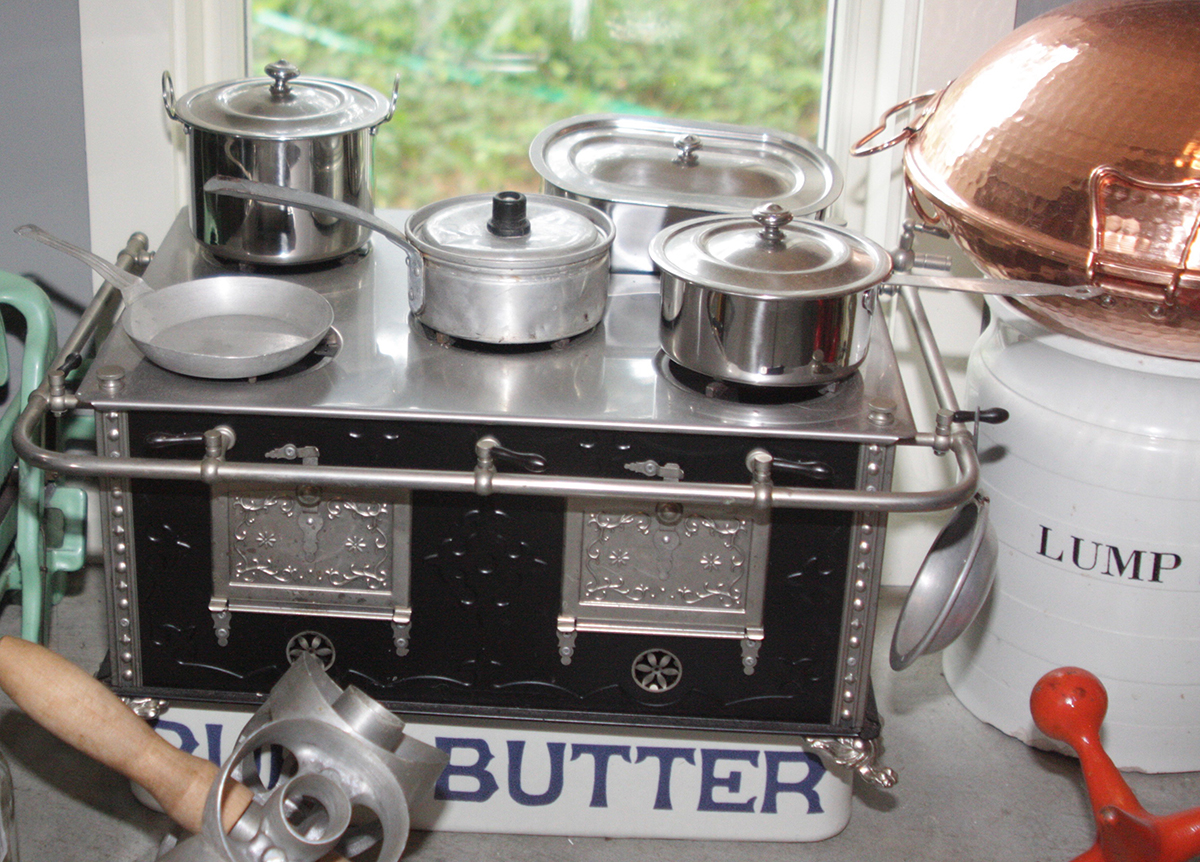
Photo courtesy of Trilogy Estate Sales
“I collect a lot of old stoves. Some work. They’re pieces of art to me. I have a couple of Marklin stoves from Germany. They’re very beautiful, but I way don’t have room for that. You can plug them in, and a light in the burners glow a little. They get hot, but you can’t cook on them.”
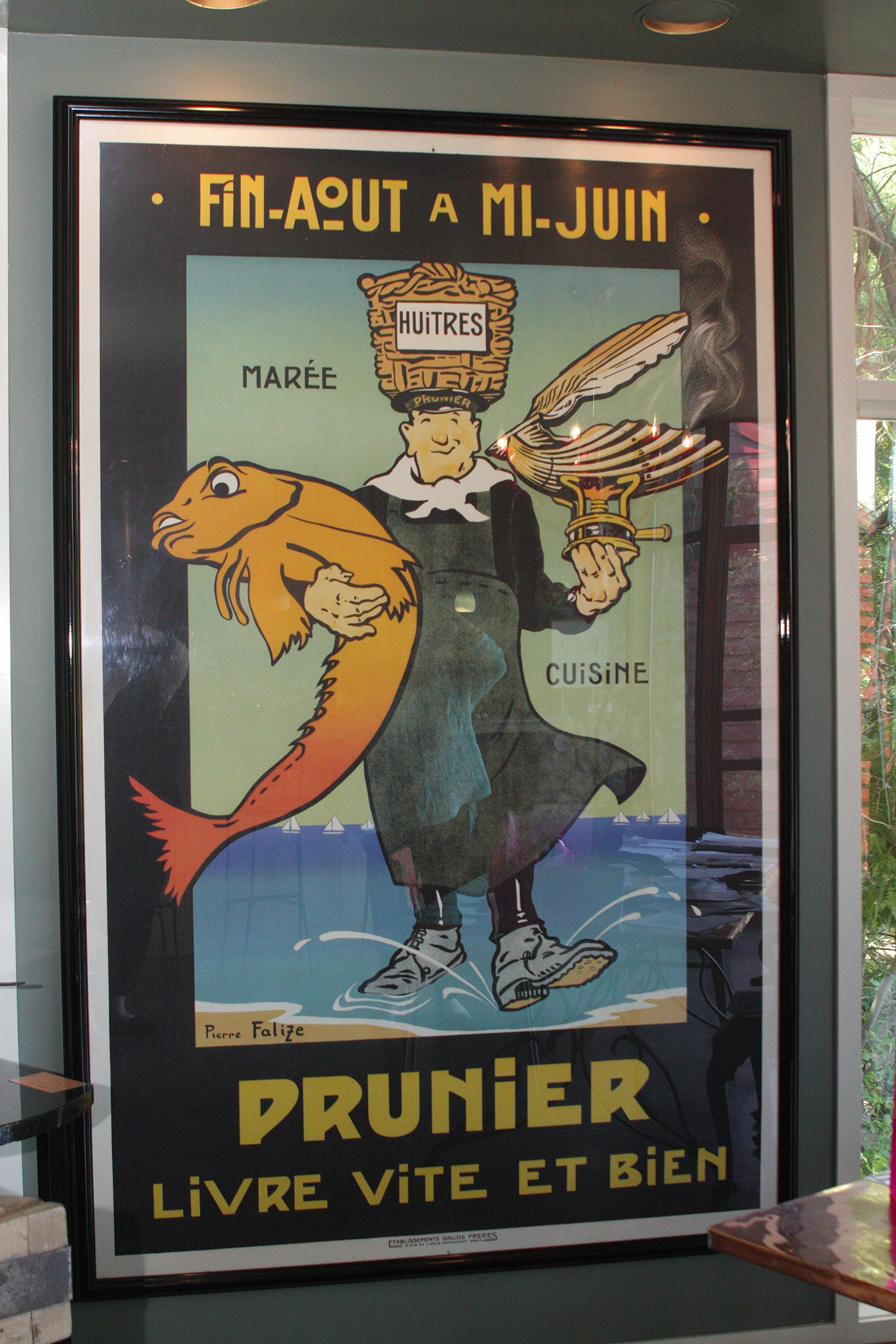
Photo courtesy of Trilogy Estate Sales
5. Antique Pierre Falize “Prunier” poster, framed
“Prunier is probably the most well-known fish restaurant in Paris. In fact, I was just in Paris, and I went to the store. I hope some restaurant who’s going to be serving oysters or fish will grab that. It’s in great shape. I bought that in Chicago at the [National Restaurant Association] show, before my son was born, and now he’s 26. I didn’t even have a place to put it. I had it rolled up in a big tube, and I carried it with me to different apartments knowing that someday I would use it. When I moved into this house, my daughter actually, in the kitchen, she built a whole wall to accept that picture. She had two side lights installed on either side of it. It has UV glass, so the color is perfect. I think it should be in a restaurant, that’s sort of why I bought it originally, but in the end, I put it in my house.”
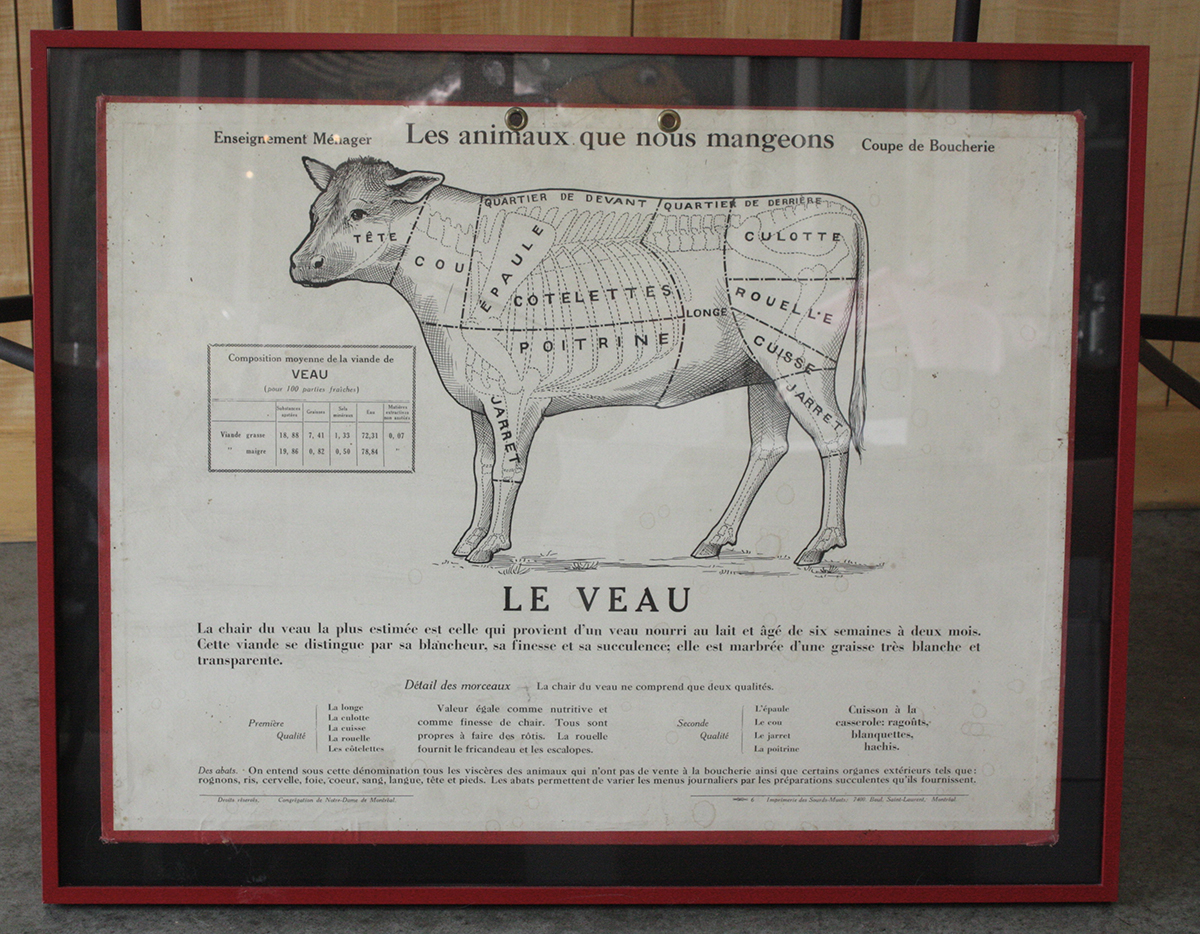
Photo courtesy of Trilogy Estate Sales
6. Vintage French butcher diagrams
“I bought these four posters [le boeuf, le porc, le mouton, and le veau]. I’m not sure where they were used. I think they could possibly have been in an old butcher shop in France, or even in a school. They are these heavy posters, like the kind you would use to teach children. I had them framed about a year ago with this brilliant red frame, because I wasn’t sure if the next thing I had would need art. To me, they’d be great in a kitchen, or a funky dining room. They have wear spots, you can tell the paper’s been stained in areas, but it does not detract from the picture itself.”
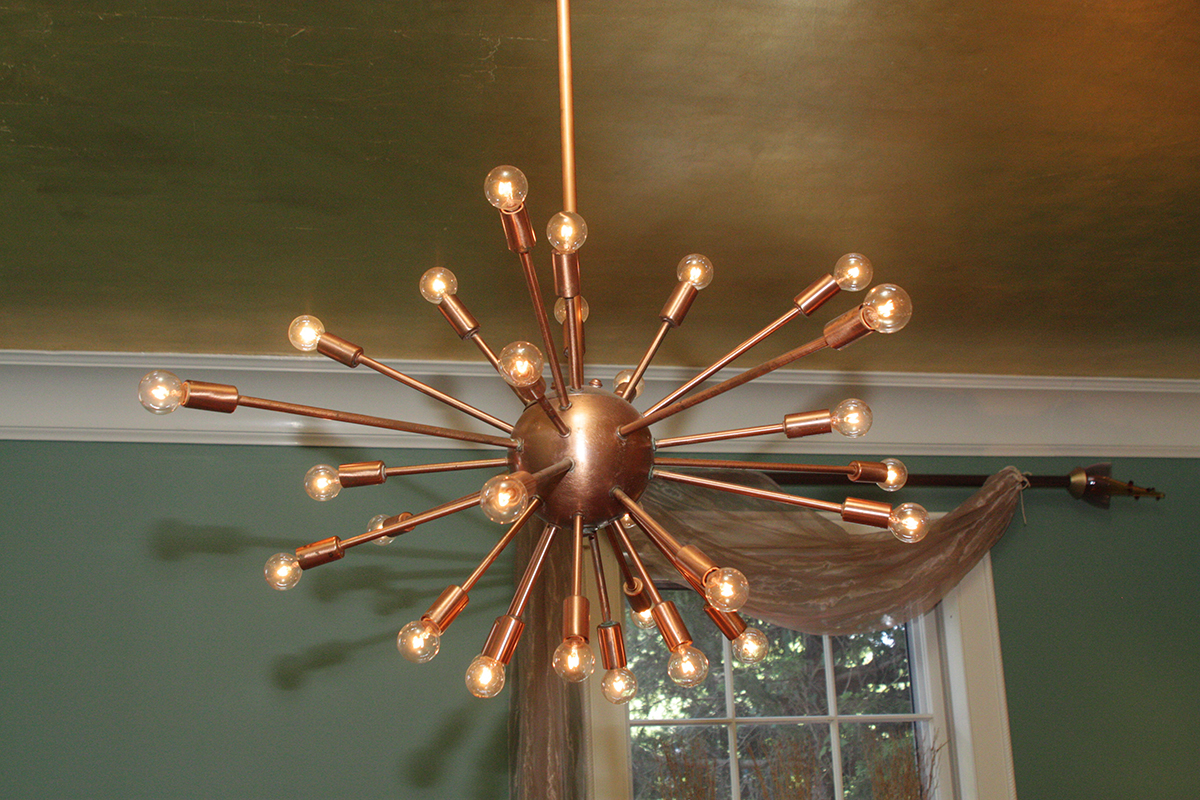
Photo courtesy of Trilogy Estate Sales
7. Copper Sputnik chandelier
“For the first 12 years I lived here, I did not have any light over the center of my table in the dining room, because I could never find the perfect thing. I would hate to have some ugly glass, drippy chandelier. That’s just not me. I was [at Showplace Antique & Deign Center in New York City] and I looked up at the ceiling and I knew in one quick second that was it. It’s from the ’60s. I have so much copper in my home, so it really works. It looks literally like Sputnik: It’s a copper ball with, there must be 25 sticks, that have these round, really cool lightbulbs. I had it restored. The value of that never goes down. I paid about $3,600, and that’s what it’s worth today.”
Got a new home to decorate, or a restaurant to design, or simply some cash to spend and an appreciation for whimsical and useful artifacts? Don’t miss the opportunity to walk through Lydia Shire’s historic Weston home and take home some of her collectibles. Check out more of the unique items on Trilogy’s website.
Trilogy Estate Sale, Saturday, July 23, 9 a.m.-5 p.m., Lydia Shire’s Weston Home (address released 24 hours prior), trilogyestatesales.com.


